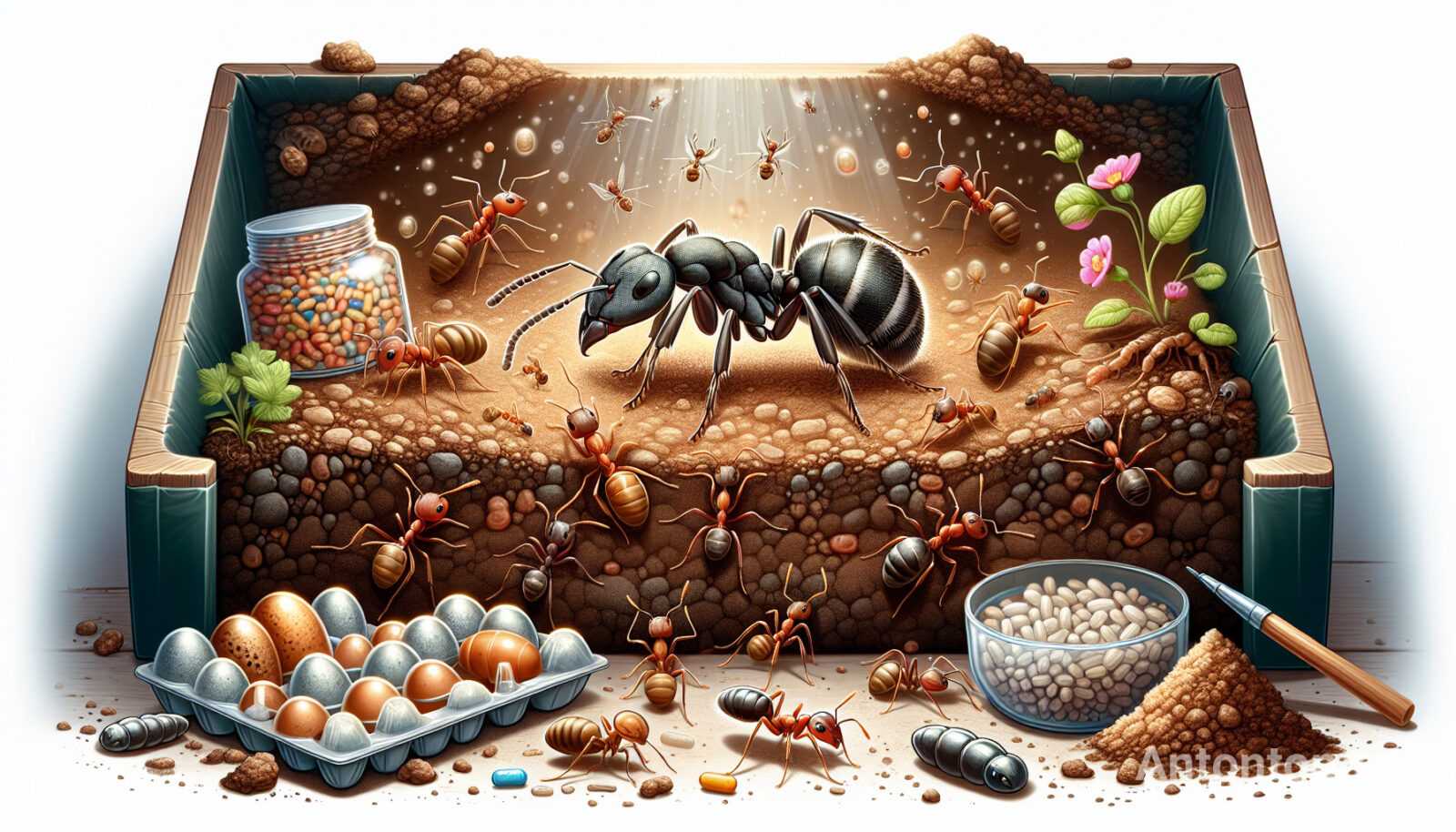Beginner Breeding Basics: Essential Tips Before Starting Your First Colony

Beginner Breeding Basics: Starting Your First Colony
Embarking on the journey of breeding your first ant colony can be both thrilling and daunting. With the right guidance, this rewarding hobby can provide a unique insight into the fascinating world of ants. Whether you’re setting up a colony of Camponotus turkestanicus or Brachymyrmex laevis, understanding the beginner breeding basics is crucial for a successful start.
Understanding Your Ant Species
Before you delve into the breeding process, it’s essential to choose the right species. Each species has unique needs and behaviors that will affect their care and breeding success.
# Camponotus turkestanicus
– Habitat: These ants prefer dry, warm environments. – Behavior: Known for their calm nature, they are suitable for beginners. – Diet: They primarily feed on sugars and occasionally proteins.
# Brachymyrmex laevis
– Habitat: These ants thrive in moist conditions. – Behavior: Very active and fast, requiring more attention. – Diet: They enjoy a diet rich in sugars and proteins. For further details on feeding these species, visit Feeding Basics: A Beginner’s Guide to Proper Care and Maintenance.
Preparing for Breeding
# Choosing the Right Environment
Creating an ideal environment is vital for the health and multiplication of your ants. Here are some factors to consider: – Temperature: Most ant species require specific temperature ranges to thrive and breed. – Humidity: Proper humidity levels are crucial, especially for species like Brachymyrmex laevis. – Space: Ensure there is enough space for the colony to grow. Overcrowding can cause stress and aggression.
# Setting Up the Ant Farm
– Type of Enclosure: Decide between a natural setup with soil and plants or a simpler formicarium with clear walls for easy observation. – Materials Needed: Prepare materials such as substrates, a hydration system, and nesting areas.
Breeding Process
Breeding ants involves understanding their life cycle from egg to adult. This includes mating behaviors and the queen ant’s role in colony development.
# Life Cycle of Ants
1. Egg: The queen lays eggs. 2. Larva: Eggs hatch into larvae, which need to be fed regularly. 3. Pupa: Larvae develop into pupae, from which adult ants emerge.
# Maximizing Breeding Success
– Feeding: Regular, nutritious feeding is essential for the growth of larvae. – Monitoring: Keep a consistent check on the health and behavior of the colony. – Intervention: Be prepared to intervene if you notice any issues such as mold growth or mite infestations.
Common Challenges and Solutions
When breeding your first colony, you might encounter several challenges. Here are some common ones and how to resolve them:
– Pest Infestations: Regularly clean the enclosure and check for any signs of pests. – Disease Management: Maintain cleanliness and monitor ant health closely. – Colony Rejection: Sometimes a new queen may be rejected. To handle this, introduce her gradually and monitor the colony’s response.
Legal and Ethical Considerations
Breeding ants also comes with its responsibilities. You should be aware of:
– Local Regulations: Check local laws regarding ant breeding and ownership. – Species Conservation: Consider breeding non-invasive, local species to avoid ecological problems. For insights on choosing your first colony, check out Beginner’s Guide: Insider Tips on Purchasing Your First Ant Colony.
Why Breeding Ants Can Be Beneficial
Breeding ants offers various educational and ecological benefits. It allows observers to learn about:
– Ecosystem Roles: Ants play significant roles in aeration and decomposition. – Social Structure: Observing the complex social structure of ants can provide insights into behavior and communication.
Conclusion: The Benefits of Purchasing at Antontop.com
Starting your first ant colony can be a remarkable journey filled with learning and discovery. By purchasing your colony and supplies from Antontop.com, not only do you get access to healthy ants like Camponotus turkestanicus and Brachymyrmex laevis, but you also benefit from comprehensive support and quality products that ensure your breeding success is profitable and fulfilling.
Remember, the key to successful ant breeding lies in understanding the specific needs of your chosen species, providing a stable environment, and continuously learning and adapting your practices. Happy breeding!
For more in-depth knowledge on ant species and their care, consider exploring additional resources such as AntWiki, which provides a wealth of information on various ant species and their behaviors.

